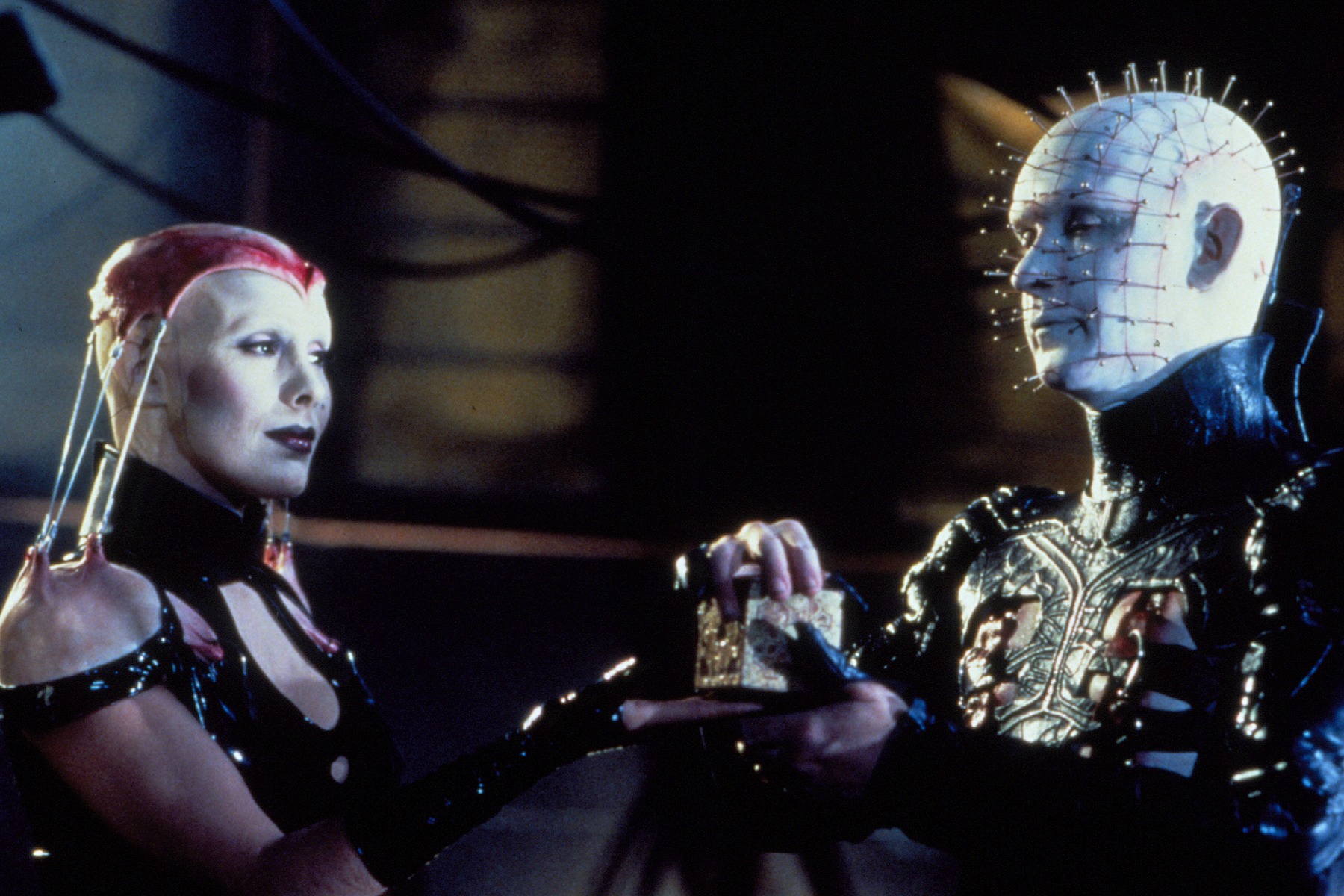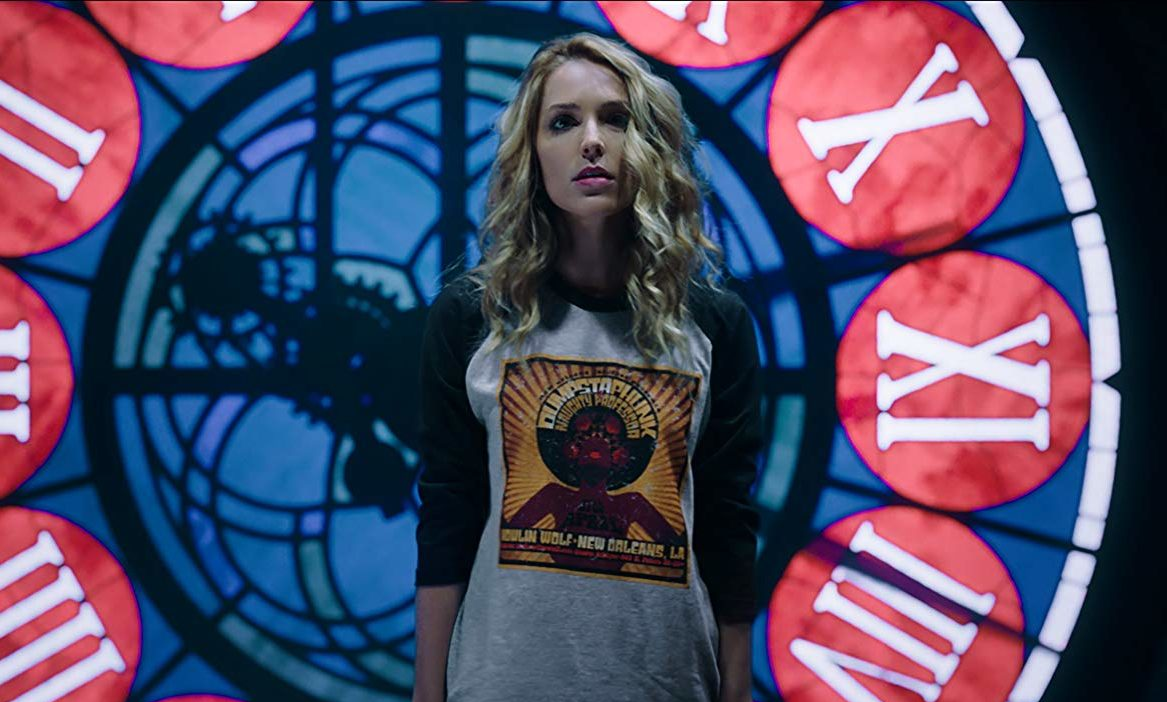Movies
How Arrow’s ‘Hellraiser: Bloodline’ Workprint Drastically Alters and Improves the Sequel As We Know It

The fourth installment of the Hellraiser franchise, Hellraiser: Bloodline, was the last film of the series to be released theatrically. It was also notorious for its troubled production, eventually leading director Kevin Yagher to walk away when Miramax demanded reshoots. Miramax then brought in Joe Chappelle to complete the film.
When Yagher saw the finished cut of Hellraiser: Bloodline, post reshoots, it’d become so removed from his vision that he had his name removed from the credits using the Alan Smithee pseudonym, as did Chappelle. While Yagher’s version of the prequel/sequel is lost to time, Arrow’s Hellraiser: Bloodline Workprint assembles the footage Yagher shot, offering fans the closest we’ll ever get to a Director’s Cut. Arrow’s workprint makes for a more coherent and fascinating version of the troubled franchise installment.
Hellraiser: Bloodline spans time, tracing a family lineage that began with Philippe “Toymaker” LeMarchand and his creation of the infamous puzzle box. LeMarchand’s descendants, John Merchant in 1996 and Dr. Paul Merchant in 2127, find themselves tormented by dreams and memories, compelled to build even more elaborate versions of the Lament Configuration. That makes their bloodline (each iteration played by Bruce Ramsey) an inherent threat to Hell, drawing the attention of summoned demon Angelique (Valentina Vargas) and Pinhead (Doug Bradley).

Frequently referred to as “Hellraiser in Space” thanks to the reshoots placing prominent emphasis on this storyline, the theatrical cut toggles between the three timelines and opens with the 2127 events. It creates an almost dream logic vibe as it bounces around from outer space to the late 18th century and then back to the present. The purpose of these overlapping timelines was to answer Miramax’s demands that Pinhead play a more prominent role; making 2127 the bookending timeline allowed Pinhead to appear much sooner in the runtime.
The workprint mostly plays chronologically, opening in 1796 to trace the origins of the Lament Configuration and the inciting summoning of Angelique that unwittingly curses LeMarchand’s bloodline. The workprint also completely changes the relationship between Angelique and Pinhead; what was hinted to be seductive in the theatrical becomes full-blown antagonistic and violent in the new version. Playing the events mostly in order, save for a few flashback sequences to 18th-century France, highlights how long Angelique has been away from Hell by the time she summons Pinhead in 1996. Important plot beats and emotional moments are expanded or added for larger impact, too. It’s not just the entire structure that’s reworked, but the finer details.
Ideologies have shifted massively in Angelique’s 200-year absence, highlighting the opposing nature of Angelique and Pinhead. Angelique prefers the slow, seductive game, while the no-nonsense Pinhead takes pleasure in pain and suffering; he has no time for her games. It’s this antagonistic relationship that makes the workprint so engaging; their conflicting ideologies constantly work to undermine their tenuous alliance to neutralize the Merchant bloodline permanently.
Not only do these characters get further fleshed out through this alternate cut, but it also clarifies a lot of choices made in the theatrical version. In this case, it underscores the bid for power between two headstrong demons, adding different context and weight to Angelique’s eventual transformation into Cenobite upon her return to Hell.

Arrow makes it abundantly clear that the workprint is absolutely not the Director’s Cut, despite having Kevin Yagher’s name listed as director in the credits. It’s presented from a timecoded VHS and assembles alternate material, rearranges the plot structure, and employs temporary music and sound effects to help bridge the gap between Peter Atkins’s initial screenplay and the final theatrical cut that was so removed from the original concept that Yagher scrubbed his name from the project. More than just a compelling look at what might’ve been, it presents insight into the post-production process and how films shift at every stage of development.
While it’s a shame that a true Director’s Cut of the film is impossible, Arrow’s workprint is an absolute gift to fans. It’s an alternate vision that drastically changes the tone, structure, and even the characters depicted in the theatrical cut. That this gem is nestled within Arrow’s Hellraiser: Quartet of Torment boxed set that features all-new 4k restorations of the theatrically released Hellraiser films makes this one of the easiest recommendations of the year.


Movies
Jessica Rothe Keeps the Hope Alive for Third ‘Happy Death Day’ Movie

It’s now been five years since the release of sequel Happy Death Day 2U, Christopher Landon’s sequel to the Groundhog Day-style slasher movie from 2017. Both films star Jessica Rothe as final girl Tree Gelbman, and director Christopher Landon had been planning on bringing the character – and the actor – back for a third installment. So… where is it?!
We’ve been talking about a potential Happy Death Day 3 for several years now, with the ball in producer Jason Blum’s court. Happy Death Day 2U scared up $64 million at the worldwide box office, a far cry from the first film’s $125 million. But with a reported production budget of just $9 million, that first sequel was profitable for Blumhouse. So again… where is it?!
Chatting with Screen Geek this week while promoting her new action-thriller Boy Kills World, franchise star Jessica Rothe provided a hopeful update on Happy Death Day 3.
“Well, I can say Chris Landon has the whole thing figured out,” Rothe explains. “We just need to wait for Blumhouse and Universal to get their ducks in a row.
Rothe continues in her comments to Screen Geek, “But my fingers are so crossed. I think Tree [Gelbman] deserves her third and final chapter to bring that incredible character and franchise to a close or a new beginning.”
Back in 2020, Christopher Landon had revealed that the working title for the third installment was Happy Death Day to Us, said to be “different than the other two films.”
In the meantime, Christopher Landon is directing a mysterious thriller titled Drop for Blumhouse and Platinum Dunes, along with a werewolf movie titled Big Bad for Lionsgate.














You must be logged in to post a comment.